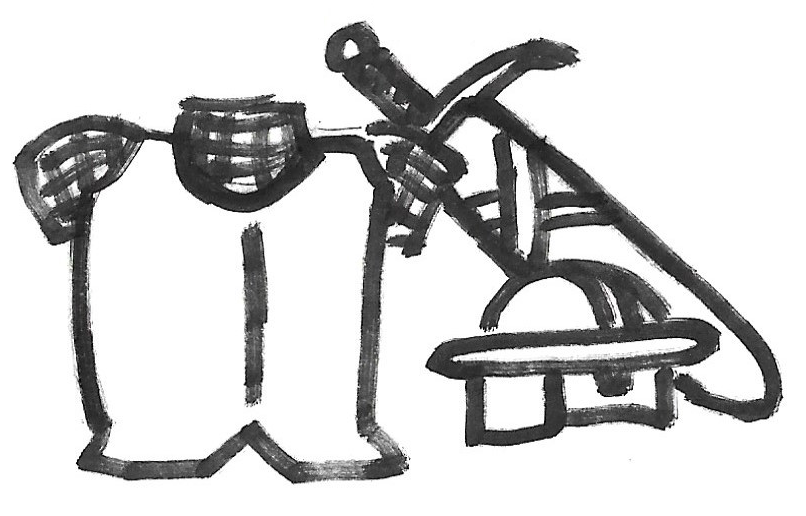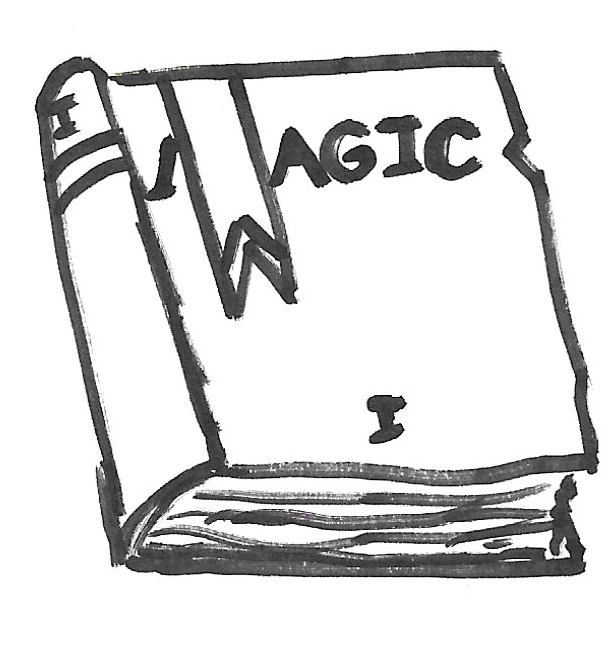Valiant Quest includes an extensive appendix with a large number of Expert Rules. This includes new classes, new prayers, new spells, rules for familiars, a table of random perks you can start play with, and rules for mastercraft items.
These rules are clearly separated at the back of the book. Mostly because I know that no matter how much I implore players that a given optional rule is optional and should only be used after you’ve played a bit if I put the expert classes in with the core classes players will inevitably pick them. But here’s a quick rundown of everything in the appendix.
New Classes
Their are 8 new classes with unique mechanics. Many are species locked and give the species unique options. The Dwarfen Guardian is uniquely exceptional at avoiding stagger and holding off hordes of foes. The Dwarfen Runemage gives dwarfs a means to cast magic by creating spell runes in-between adventures. The Elven Spellblade casts spells with the focus they gain from fighting. The Halfling Wanderer has a unique mechanic where they gain extra action points every round they can only use on random actions, making them an odd if unreliable jack of all trades. The Human Paladin combines the faith of a priest with the fighting abilities of a fighter.
I want to zoom in on the three classes that aren’t restricted to one species: the Sword master, Sniper and Druid.
Sword masters are an odd class. A front line fighter with light armour. They can reroll boon and malus dice rolled by them and their target when they fight with a sword which lets them make the most of advantages and nullify disadvantages. This is going to lead to them getting a lot more critical hits that other classes leading to their second ability:
Perfect Strikes
When you critically succeed on a sword attack, choose one of the following:
Head: You may reroll a damage die.
Arm: Target is disarmed, their weapon lands 2 spaces away in a random direction.
Vitals: Deal bonus damage equal to the result of your boon die (if any).
Leg: Target falls prone or is staggered even if they are larger than you.
Head attacks are an especially important choice here as they counteract the sword’s low amour piercing abilities. Arm and Leg give you tremendous versatility. This is a cool enough kit by itself but what makes the sword master truly unique is their talent tree.
The class tree of the Sword Master is “Sword Art”. Just like the spellcraft tree of casters there is no way in to the sword art tree except through being a sword master. This helps sword masters pick useful talents as they see very little value from the ballistics tree. With six extra talents to choose from no two sword masters will ever be the same.
The second class I want to zoom in on is the Sniper. The sniper came out of a desire to let players play a ranged focused character in a game that so heavily favour melee both in viability and how mechanically engaging it is.
Snipe
When you make a ranged attack that has no maluses, gain boons for each ally threatening the target and deal bonus damage on ranged attacks equal to the result of your Boon die (if any).
The Sniper’s signature ability let’s them benefit from the boons of ganging up on foes same as any melee and let’s them apply all those boons to damage as well. This potent ability is disabled if any creatures or terrain are screening the target at all so your positioning need to be just as careful as the melees. Finding a good place to attack without obstruction without rendering yourself vulnerable to being charged will hopefully be as engaging as the melee dance of risks and rewards.
Finally the Druid is a caster who can commune with nature to gain magical powers from the land. Druids cast spells using attunement and they keep track of one attunement for each of the six elements separately. When you commune for four hours you can gain any combination of attunements up to twice your level to spend on spells but you can only gain attunements in elements you have access to.
Earth: Must be on solid land.
Wind: Must be outside.
Fire: Must be on a Hot campaign map or outside during summer.
Water: Must be outside in the rain or near a river, lake, or coast.
Dark: Must be a full moon or four dungeon levels deep underground.
Light: Must be outside at noon.
Earth and wind are substantially easier to access than the rest so unlike other casters you will tend to strongly lean towards those specific elements.
What’s more unique about druids is the way they get there spells. Every location on the map aside from cities will have a spirit watching over it. Druids can seek this spirit out and spend some time learning the spell they know. Every spirit knows one spell. If a druid wants to have a big repertoire of spells they will have to travel for it.
Mastercrafts

Some items are very well made. With this rule 1-in-20 armourers, weaponsmiths and bowyers are skilled enough to make mastercrafts. Additionally named foes might wield mastercraft items. These items are generally a little better than there peers and offer a use for large amounts of gold.
What’s more exciting are weapon legends. You can name a mastercraft weapon and it will gain experience for slaying foes just as a character does. The weapon also gains experience when it outlives it’s owner. The weapon keeps a legend just like a player and can be passed down from character to character. When it gains levels it rolls a legendary trait and becomes more powerful.
Familiars
Familiars have always been an odd spot for me rpg wise. They are a staple of roleplaying games for magic users and nature inclined warriors alike but there is this vast gulf between how they are represented mechanically and the emotional appeal of having a familiar to the players of a game.
Most games treat familiars or animal companions as a monster aligned with the players. They follow all the monster rules and have all the monster stats. In games with complicated stat blocks this can be a pain in the ass. It also introduces a big emotional problem to me.
Familiars die… a lot.
Or at least they ought to die a lot. Most GMs will deliberately pull there punches here. But all AOE spells will kill familiars and any semi intelligent monster who gets tired of this stupid 2 hit point frog aiding its allies every turn is going to splat it. Most rules that let you get familiars know this and have procedures for replacing or resurrecting your familiars.
This is tonally bizarre. Imagine if Aang replaced Momo every other episode because our beloved furry friend was slain in battle. Or weirder yet imagine if Aang resurrected momo every other episode and violence against our beloved furry friend became a slapstick gag as his immortality just becomes more and more of a joke.
It undercuts any sense that you care for the familiar and while a tiny percentage of your players will have had their family slaughtered by orcs, the death of a pet is pretty real to a lot of people. It’s just weird all around.
So I knew right away familiars need their own procedures. Instead familiars travel around the grid like any other character but cant be targeted for attacks and don’t take up space or project threat. Each type of familiar has unique abilities based on their type. Falcons distract ranged attackers and people trying to fiddle around with their inventories. Hounds can make coup de gras attacks and prevent adjacent allies from being coup de gras’d. Rodents pick things up and take them to whoever needs them most. Toads can have spells relayed through them. Finally, Cats provide a traveling morale buff to allies and debuff to foes.
The only recourse for the monsters fighting against familiars is that for 2 actions an unthreatened foe can shoo a familiar away for the remainder of the battle. This usually isn’t worth doing but it does mean they aren’t completely free to harass whoever they please.
Perks
Perks give players a 2d6 table to get a unique benefit on character creation. Many of these tie into other expert rules such as starting with an heirloom; which makes one of your starting weapons mastercraft. Other perks include starting with a familiar, or a noble estate where you can restock for free. I love tables like these in games and it gives one more step in character creation for characters to diverge and have a bit more unique flavour.
New Blessings
This optional rule adds six new blessings, two for each species capable of becoming a priest. These species-locked blessings make the different species priests stand a bit more apart and helps give the impression they aren’t all worshipping the same gods the same way.

Grappling
This optional rule adds a new move available to all characters. Grappling is something that is always harder to simulate in roleplaying games than a duel of trading blows at more than arms length apart. But it’s also not something people generally want to include because the option to grapple, even if seldom taken, makes the world more physical and grounded. There was no easy and concise way to include grappling in the core rules but for players who have master the procedures of the base game it is an easy thing to include.

Arcane Spellbook
This optional rule adds a new spellbook to the game. The six schools of the arcane spellbook (as opposed to the core game’s traditional spellbook) are divided not by the aspects required to cast them but by the type of effect they have on the world. Instead of fire, water, earth, wind, light, and dark you get evocation, transmutation, illusion, conjuration, abjuration, and enchantment. Some spells in the arcane book are reprints of the traditional spells but resorted for the new way of seeing magic. (Bravery and conflagration are both fire spells in the traditional book but in the arcane book bravery is an enchantment and conflagration is an evocation.) But many of the spells are new, only made possible by this new way of thinking about magic. The arcane book does not replace the traditional book but exists alongside it, preferred by wizards who invented this new classification and have easy access to all six elements to pay the costs of the mixed up schools of arcane magic.

From here on I’m going to be focusing on trying to finish up the book soon. I have no real plans for future blog posts on the subject until it’s out. Until then I’ll talk about whatever next strikes my fancy.
If you’ve read through all of the Valiant Quest posts up until now thank you so much for your interest! The fact that there is a regular number of people checking out my blog every day is super cool to me and makes me feel like I’m doing something right. Keep your eyes out for Valiant Quest’s release sometime soon!


Thank you for sharing info on your game. I’m really looking forward to trying Valiant Quest!
My experiences are consistent with yours: if players see stuff in the character creation chapter, it’s a full option they get access to every time, and it’s hard to countermand that. If I the GM restrict something, I often get pushback.
Major kudos for taking that into account.
I’m curious how the mechanics for activities for outside combat work. Are there ability or skill checks? Or another method of action adjudication?
Thank you for your time.
LikeLike
Absolutely. It’s definitely a major problem with the bazillion races and classes model. No matter how terrible dragon people are for most settings maintaining a consistent tone if dragonmen are in the front of the book as an option players are going to get real mad if they can’t be one.
The non-combat mechanics are a little barebones. There is a mechanic called utility rolls which are rolled with a d20 adding a relevant attribute versus a flat difficulty of 10. If it’s supposed to be hard you roll at +2 maluses (-1d6), if it’s super hard you roll at +4 maluses (-1d10), if it’s easy you get +2 boons (+1d6). I didn’t really focus on them because this game is really about combat and exploration so I just wanted a quick tool to resolve non-combat things players came up with. If you wanted to staple another game’s non combat procedures you like onto valiant quest you probably could, it’s just not what the game as written is about.
LikeLike
That makes sense to me.
Thank you so much for explaining how the non-combat mechanics work, and for sharing your thought process!
LikeLiked by 1 person
Any news on release window of Valiant Quest? I really curious about it and toying with the idea of hacking it for WFRP.
LikeLike
Trying to get it done before the new year but also don’t want to overwork myself over the holidays… we’ll see.
But soon regardless, there are like 5-10 pages left, table of contents,an index and some proofreading left and that’s about it.
A wfrp hack would be so perfect tbh
LikeLiked by 1 person
Absolutely use the holiday for relaxation (as well as it goes in these days of the Great Plague), I just read the latest installation of PbtT and was thinking how to add a bit of social games to Valiant Quest at the same abstraction level. Was thinking about something like a simple boardgame or card game. Something thats are played parallel with the more action oriented bits and helps keeping track of all the people, for both GMs and players.
A bit like the “orrery” of SkyCrawl with circles and stuff. Very simple and abstarct.
LikeLiked by 1 person